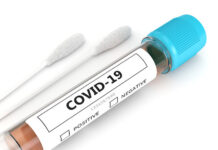
As college students arrive on campus this fall, it’s a time of new experiences, new friendships, and making memories that will last a lifetime. Unfortunately for many, it is also a time of harmful and underage drinking and dealing with its aftermath—from vandalism and sexual aggression and other forms of violence to injuries and death.
According to the 2016 National Survey on Drug Use and Health (NSDUH), 57.2 percent of full-time college students ages 18 to 22 drank alcohol in the past month; 38.0 percent engaged in binge drinking (5 or more drinks on a single occasion for men or 4 or more drinks on an occasion for women) in the past month; and 10.5 percent engaged in heavy alcohol use (binge drinking on 5 or more days in the past month). These rates are higher than those for their non-college-attending peers.
The consequences of harmful and underage drinking by college students are more significant, more destructive, and more costly than many parents realize. And these consequences affect students whether or not they drink. The most recent statistics from the National Institute on Alcohol Abuse and Alcoholism (NIAAA) indicate that drinking by college students ages 18 to 24 contributes to an estimated 1,519 student deaths each year. In addition, there are an estimated 696,000 assaults by another student who has been drinking and 97,000 cases of sexual assault or date rape each year.
Early Weeks Are Critical
Although the majority of students come to college already having some experience with alcohol, certain aspects of college life, such as unstructured time, the widespread availability of alcohol, inconsistent enforcement of underage drinking laws, and limited interactions with parents and other adults, can intensify the problem.
The first 6 weeks of freshman year are a vulnerable time for harmful and underage college drinking and alcohol-related consequences because of student expectations and social pressures at the start of the academic year.
Parents Can Help
An often-overlooked protective factor involves the continuing influence of parents. Research shows that students who abstain from drinking often do so because their parents discussed alcohol use and its adverse consequences with them. During these crucial early weeks, parents can do a number of things to stay involved.
Parents can help by:
- Talking with students about the dangers of harmful and underage college drinking—such as the penalties for underage drinking, and how alcohol use can lead to sexual and other violence, as well as academic failure and other adverse consequences.
- Reaching out periodically and keeping the lines of communication open, while staying alert for possible alcohol-related problems.
- Reminding students to feel free to reach out to them to share information about their daily activities, and to ask for help if needed.
- Learning about the school’s alcohol prevention and emergency intervention efforts.
- Making sure students know the signs of alcohol overdose or an alcohol-related problem, and how to help.
Resources Are Available
For parents who want to discuss the consequences of college drinking with their sons and daughters, a variety of helpful resources are available from NIAAA at https://www.collegedrinkingprevention.gov. These resources include a parents’ guide that offers research-based information plus helpful advice on choosing the right college, staying involved during the freshman year, and getting assistance if faced with an alcohol-related crisis. The website also provides links to alcohol policies at colleges across the country, an interactive diagram of how alcohol affects the human body, and an interactive alcohol cost calculator. Additionally, NIAAA’s CollegeAIM—the College Alcohol Intervention Matrix, available at https://www.collegedrinkingprevention.gov/collegeaim—is a tool that helps schools and parents address harmful and underage student drinking by identifying effective alcohol interventions. For more information, visit: https://www.collegedrinkingprevention.gov.



